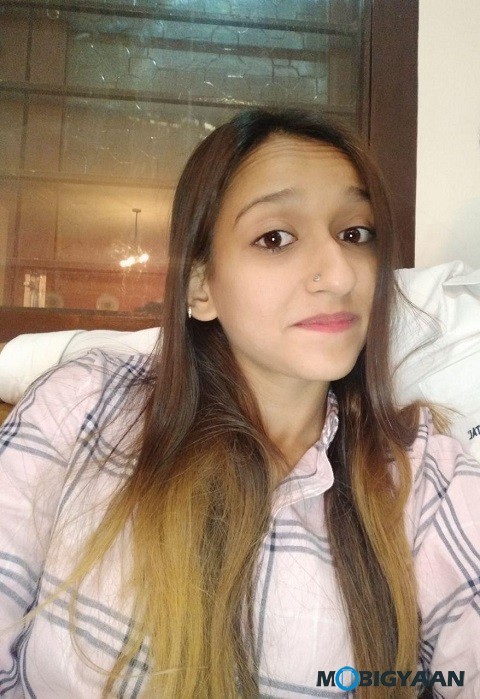Chinese smartphone brand Vivo which is known for its selfie-focused phones has recently unveiled its world’s first in-display fingerprint scanner phone, Vivo X21 UD. A similar designed Vivo V9 today announced in India and it’s latest Vivo flagship you will see. We got our hands-on with Vivo V9 and here are the first impressions of it.
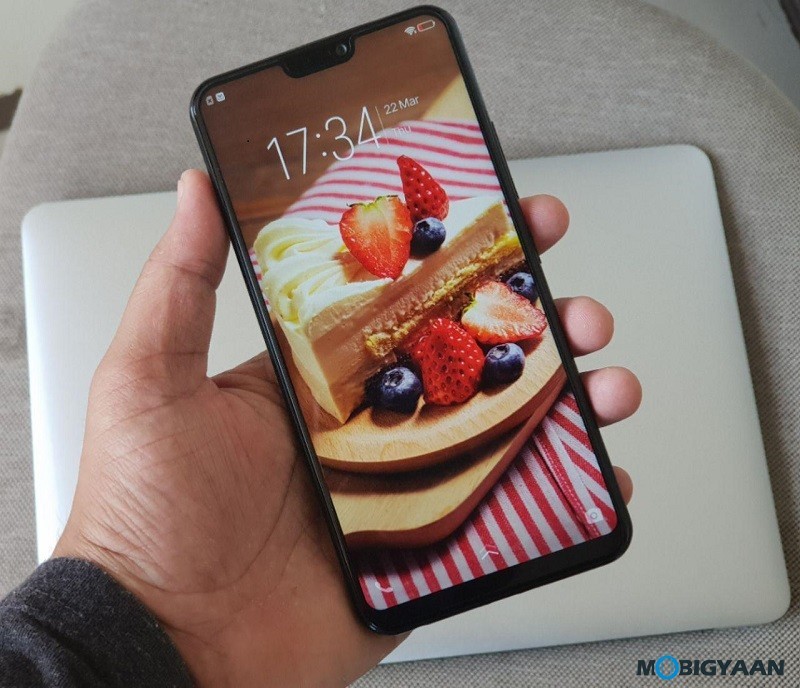
Vivo V9 Specifications
- Display: 6.3-inch FullView IPS LCD Display, Full HD+ resolution (2280 x 1080 pixels), 19:9 aspect ratio, 2.5D curved glass
- Software: Android 8.1 Oreo, FunTouch OS 4.0 UI
- Fingerprint Scanner: Yes, at the back
- Face Unlock: Yes, AI Face Access
- CPU: Up to 2.2 GHz octa-core Cortex-A53 processor, Qualcomm Snapdragon 626, 14nm LPP
- GPU: Adreno 506, OpenGL 3.1+
- Memory: 4 GB LPDDR3 RAM
- Storage: 64 GB internal storage, MicroSD support up to 256 GB (dedicated slot)
- Main Camera: Dual cameras (16 MP + 5 MP), PDAF, AI Bokeh Mode, Single LED flash, 4K video @30fps
- Front Camera: 24 MP, f/2.0, Portrait Mode, AI Face Beauty, AR Stickers and Lighting Effects, Screen flash, 1080p video @30fps
- Connectivity: Micro USB port, USB OTG support, 3.5 mm stereo jack, Wi-Fi 802.11 a/b/g/n/ac, Bluetooth 4.2, GPS, FM Radio
- Cellular: 4G LTE, Dual nano SIM (GSM), VoLTE-enabled
- Battery: 3,260 mAh Li-Ion (non-removable), Qualcomm QuickCharge 3.0
- Colors: Pearl Black, Gold
- Price: ₹22,990
- Availability: Flipkart, Amazon India, Offline retail stores
Design, Build, & Ergonomics
What is surprising is that the Vivo V9 comes with the infamous notch at the top resembling the iPhone X design. The front design is something that you might have seen before. Not just from the front side, the rear cameras are also vertically placed. Many players are moving to such design this year, the OPPO R15 and ASUS ZenFone 5 are way too similar to Vivo V9 alongside with a notch.
The top bezel is compressed and it only takes a portion of the screen giving extra space to the display. The 6.3-inch display looks tempting, with a resolution of 2280 x 1080 and an unusual 19:9 aspect ratio, the Vivo V9 is far better in design. It’s the first Vivo phone to offer about 90% screen-to-body ratio, V9 has gone almost bezel-less, the bezels are super thin and the screen looks really big.
The Vivo V9 is covered with glass, the whole body is wrapped up with glass. It’s glossy and slippery, the edges are curved which adds to its ergonomics. It’s also light in weight and fits in the hands very well.
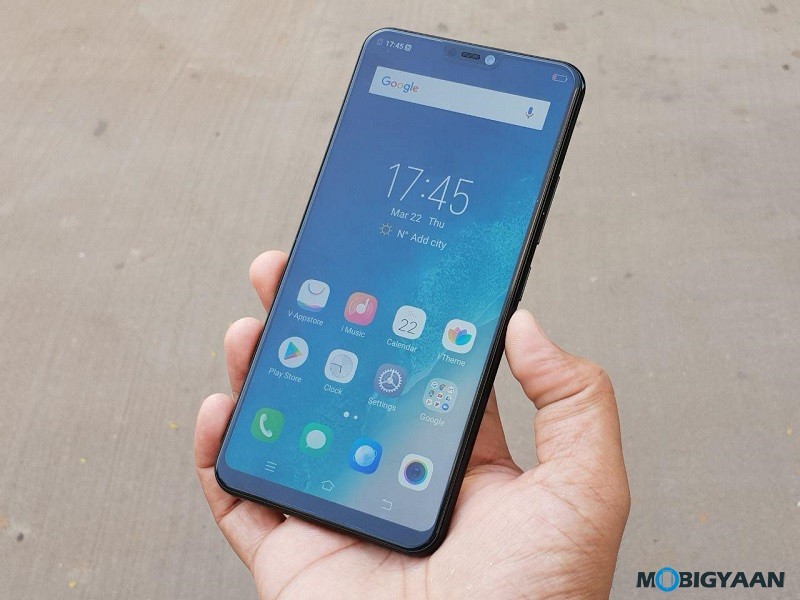
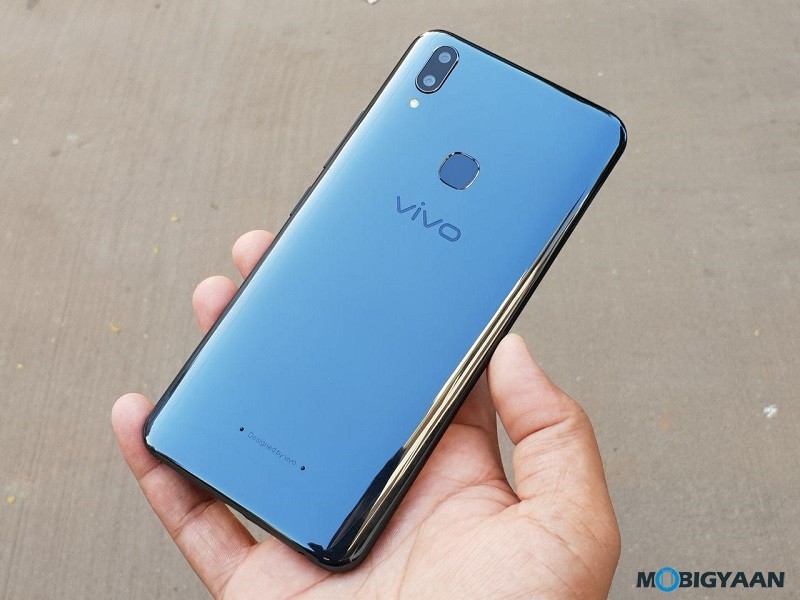
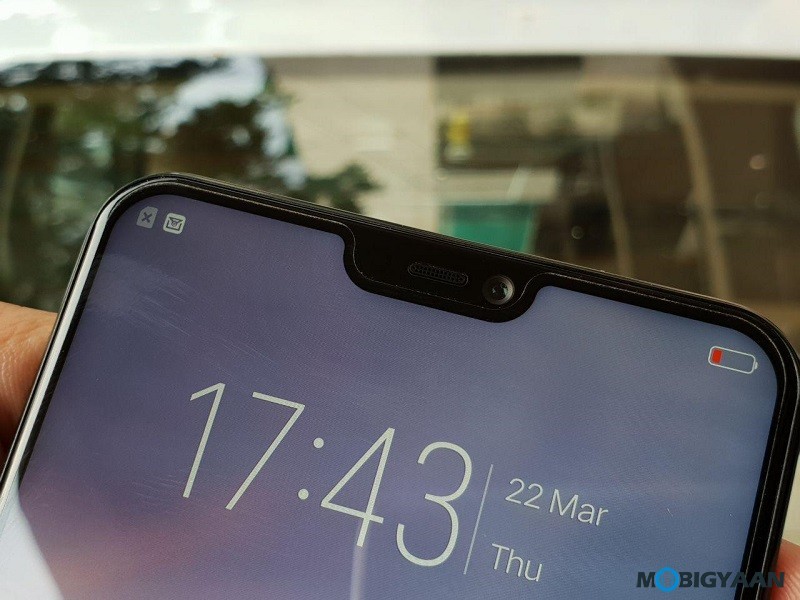
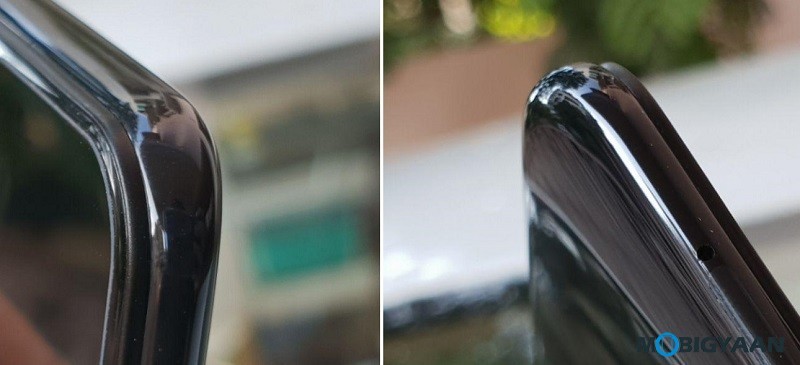
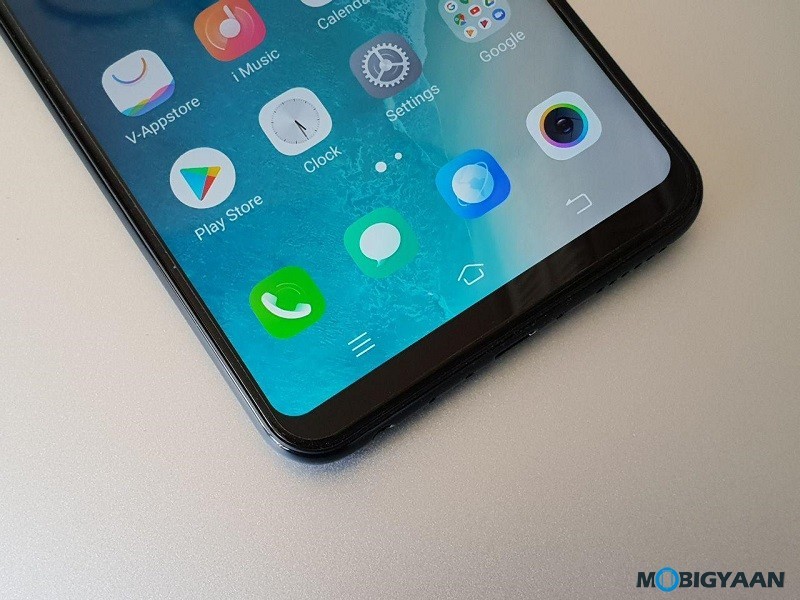
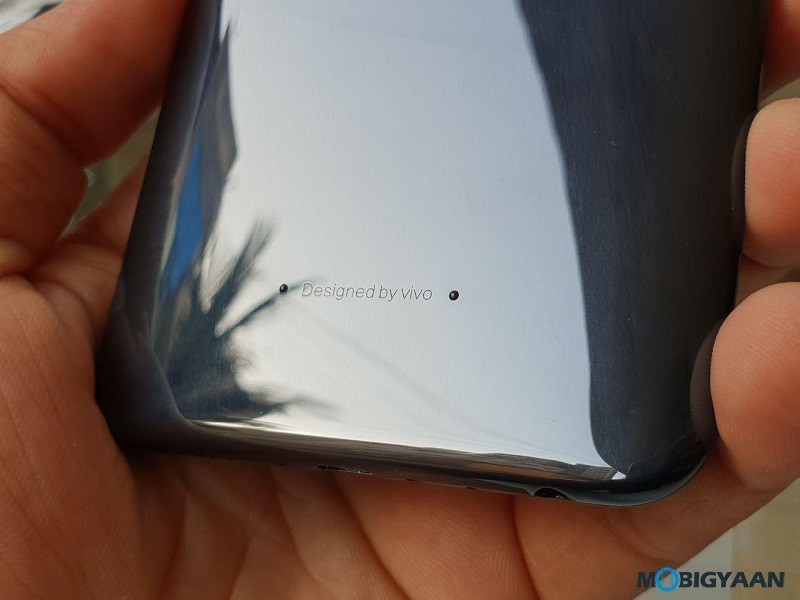
The specifications include a Qualcomm Snapdragon 626 SoC consisting of eight Cortex-A53 cores clocked at maximum 2.2 GHz. It further includes a 4 GB RAM module with LPDDR3-type and a 64 GB internal storage that expands via microSD card up to 256 GB. Please note that the microSD card slot is standalone which does not interfere the SIM cards. There’s a 3,260 mAh capacity battery that keeps the phone running.
If Vivo has made it to this far, why wouldn’t they prefer a USB Type-C port, Vivo V9 still uses the old micro USB port and most Vivo phones are. We are yet to see a type-C USB port on Vivo phones. Anyways, the sides offer power button and volume buttons (right) and a SIM tray (left) that holds two nano SIM cards and one microSD card.
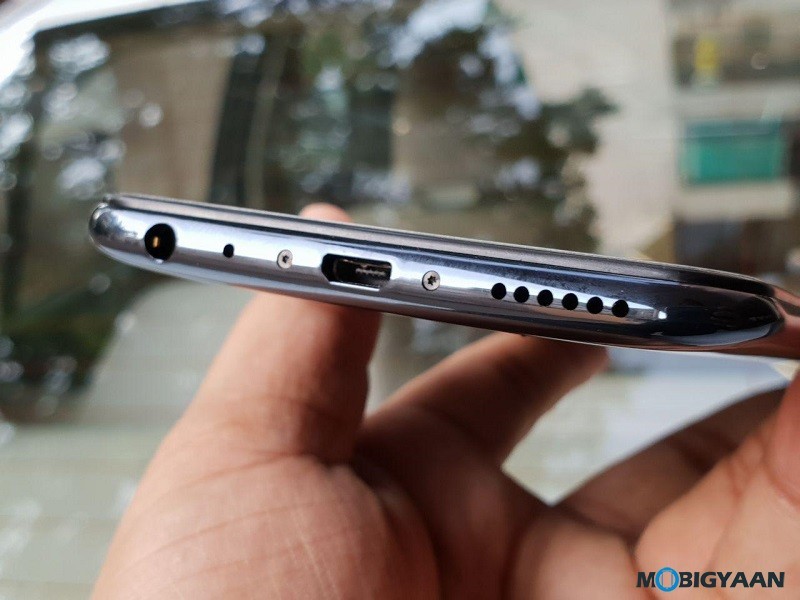
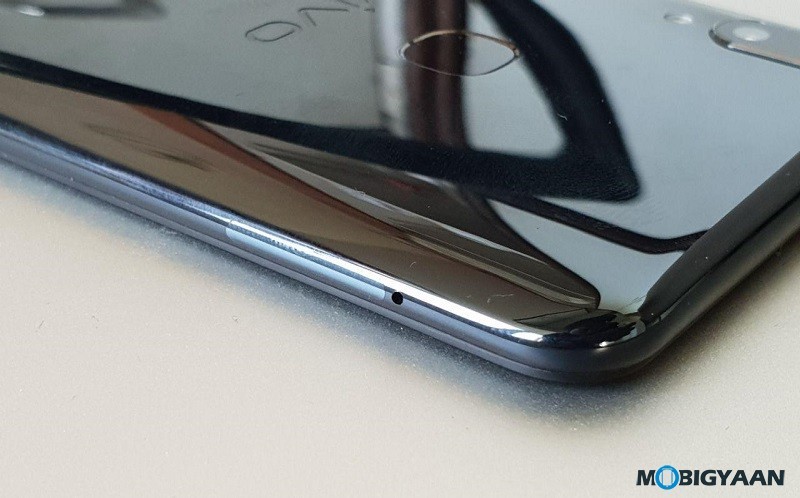
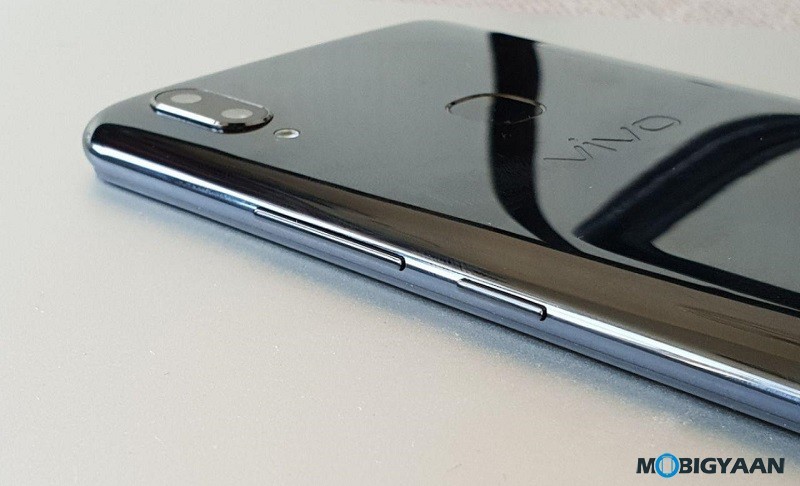
Here’s the unboxing video of the Vivo V9. The box contents include the handset, micro USB cable, Charger, Earphones, Silicon case, User manuals and Warranty information.
Vivo V9 Unboxing
Software & User Interface
The best thing about the phone is it has got the Android Oreo version 8.1 which is the latest Android build as of now. On top, it’s layered with Vivo’s FunTouch OS 4.0. In our initial impressions, we saw the interface is filled with bloatware as usual. Even with the newer Android, it still lacks the quick apps switching and the native multi-window support from the recent button. Although it has the split-screen gesture, split-screen only works with a few apps. Long press the recent key doesn’t trigger multi-window.
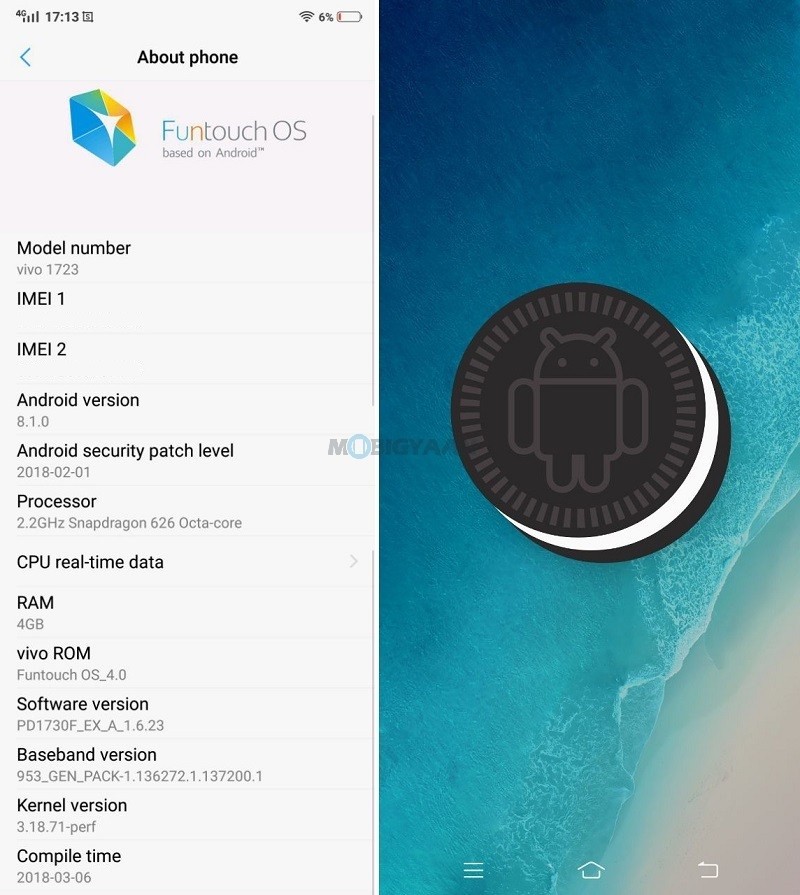
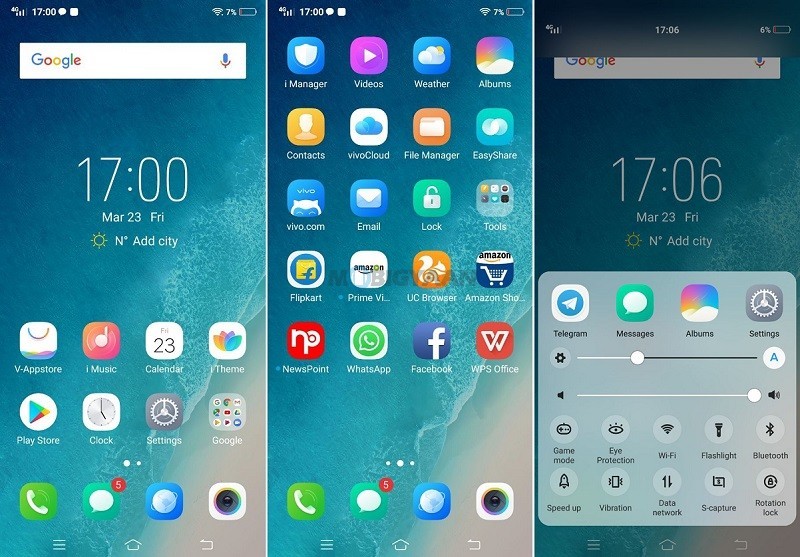
Cameras
The selfie camera includes a 24 MP sensor with screen flash and a bunch of AI features. The same applies to the dual rear cameras (16 MP + 5 MP) including the AI Bokeh mode which is none other than the Portrait mode you’ve seen on many phones.
The cameras are AI-powered meaning it takes accurate bokeh style shots with better edge detection and face detection to apply beauty effects. Since there are dual cameras at the back, the focus and depth can be adjusted after you take a picture, unlike the front camera. This is similar to what we have seen in the Vivo V5 Plus (dual selfie cameras).
More features include AI Face Beauty, AR Stickers, and Lightning effects. We believe it’s the same 24 MP camera sensor used in the predecessors, Vivo V7 and Vivo V7+, however, with additional software optimizations and AI-enabled.
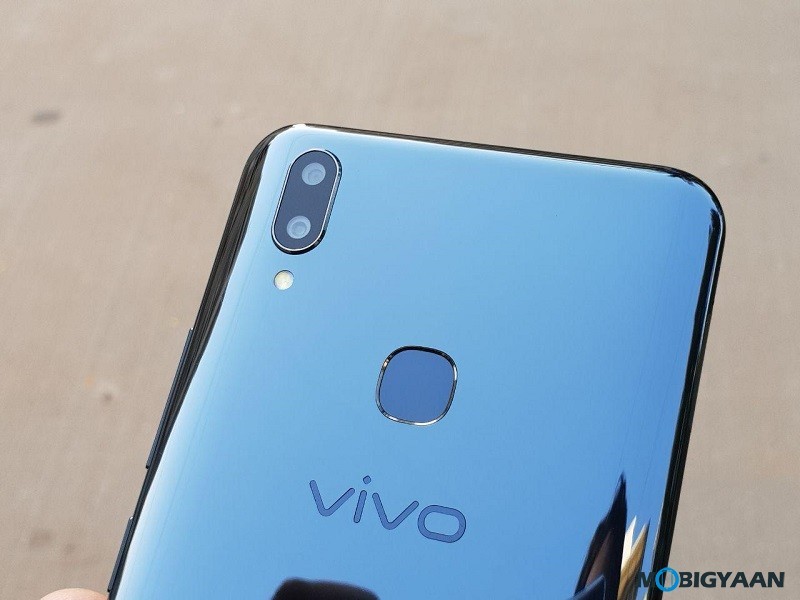
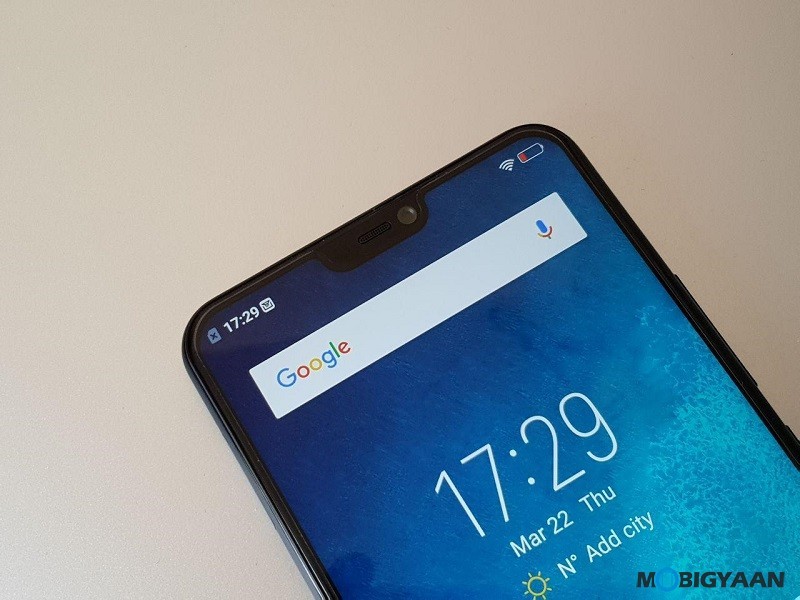
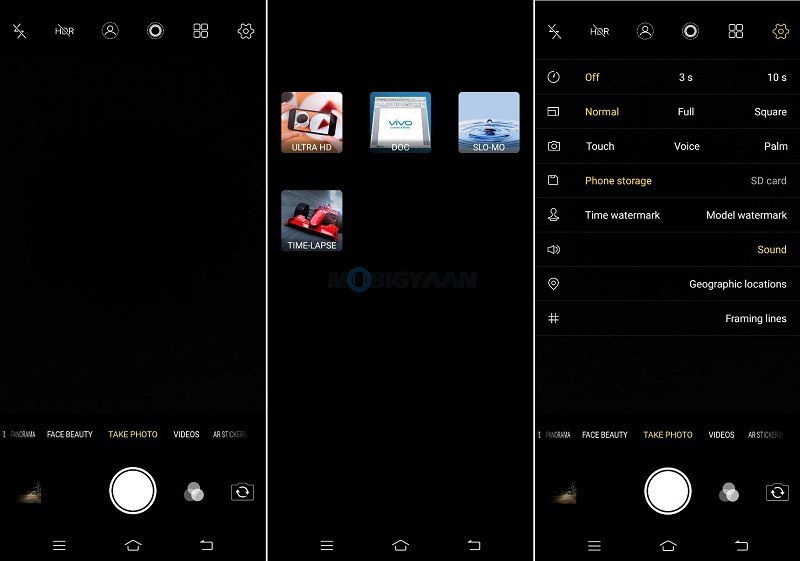
We managed to take some selfies and a shot with AI Bokeh enabled from the cameras. Take a look.
Vivo V9 Selfies
Early Verdict
As far as the design is concerned, it definitely gets attention, the FullView display looks amazing and its glass body sets it apart from the competition. Android Oreo ensures that it has all the latest updates and patches. The camera took decent shots, the AI Bokeh mode enables you to add the blur effect in the background while the selfies turn out to be similar to that of Vivo V7.
Stay tuned for more details about the phone in the upcoming review of Vivo V9.



